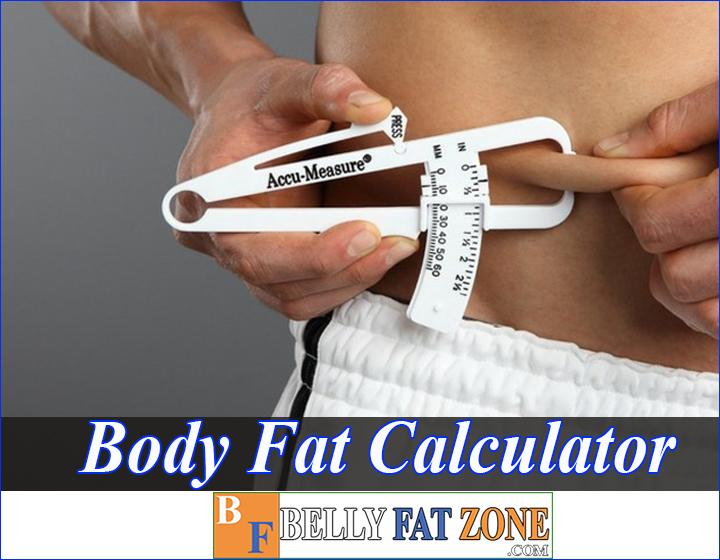How many calories should I eat to lose weight?
This is a question many people attempt to answer when they set off to shed some of the extra weight to improve their current and future health outcomes, well-being and potentially self-esteem and happiness. While this is a good question to ask, you should also be open to the opportunity of supplementing a caloric intake reduction with an increase in physical activity like fitness exercises, running, etc. since reducing food intake and/or increasing our physical activity level are the two ways to reduce body weight according to the energy balance principle. According to the conservation of energy law in order to reduce your body weight, which is effectively stored energy, you need to induce a caloric deficit by either increasing your energy expenditure or by decreasing the number of calories you consume daily.
A lot of advice commonly given out states that to lose 1 pound (~0.45 kg) per week you need to reduce your caloric intake by 3,500 kCal per week*. This weight loss rule is ubiquitously known as the “3500 kCal per pound rule” which is, unfortunately, very imprecise as it was “derived by estimation of the energy content of weight lost but it ignores dynamic physiological adaptations to altered body weight that lead to changes of both the resting metabolic rate as well as the energy cost of physical activity”[1]. Weight loss works differently for persons of average weight, for the obese and for the extremely obese. Losing 5 pounds is also different than losing 50 pounds. You can read more on this in our “how many calories to lose weight” section below.
In our weight loss calculator above we have incorporated a dynamic model which estimates how many calories you would need to reduce your daily intake by in order to achieve a given weight loss goal. It allows you to also specify if you intend to change your level of physical activity and adjusts the estimate accordingly. You can see more details on the mathematics and statistics behind this calorie calculator for weight loss as well as the daily energy expenditure and body fat estimates used in it in the “How it works” section.
* It should be noted that kiloCalories are commonly called simply “Calories”, even though this is technically incorrect since 1,000 kCal = 1 Cal. We stick to this convention for most of this page.
The science behind the weight loss calculator
This tool computes the difference between your caloric intake and energy expenditure in order to estimate the number of calories you need to consume daily if you want to achieve your body weight target. Calculation of Total Daily Energy Expenditure (a.k.a. Total Energy Expenditure) and Body Fat Percentage is done using the formulas described in our respective dedicated calculators. You can find the formulas and references for them under each tool.
The computation of the proportion of energy intake which needs to be cut down is performed in several steps. First, we compute the proportion of fat mass (FM) and fat free mass (FFM) which you are expected to lose since variability in this proportion can result in large differences in required caloric intake restriction. It is known that persons with a larger percentage of body fat usually lose a larger proportion of fat versus fat-free mass, which requires a larger energy deficit to achieve.
We have chosen to compute this based on the Forbes formula improved on by Hall [2][3]. In the formula below FFM stands for Fat-Free Mass, BW for Body Weight, FMi for Initial Fat Mass, Δ for change between initial and final condition and W for the Lambert W function:

The advantages of this formula over the original Forbes formula for the proportion of fat mass lost under limited caloric intake is that the refined version of Hall is valid for macroscopic changes and has better predictive capacity for real-life weight loss, including very fast weight loss e.g. following a bariatric surgery. This happens as, unlike the original, it depends on the sign and magnitude of the body weight change.
Having the above calculation allows us to use the two-compartment macronutrient flux balance equation presented in Chow & Hall [4] which stems from the law of energy conservation and allows us to adjust for the different energy density of fat and non-fat tissues. The latter are primarily proteins since carbohydrates fluctuate only in very short time spans due to the limited glycogen storage capacity.

In the above notation in formula (1) (simplified vs the original) cl and cf are energy density constants for fat and fat-free mass, dt is duration of the weight loss period in days. Formula (2) simply demonstrates the relationship between the proportional change, the energy intake and the energy expenditure, which allows the weight loss planning calculator to work.
The most important factor here is that the ratio between the two constants is about 9.5 to 1 in favor of fats as they store vastly greater amounts of energy per unit of mass. The implication for calorie calculation for weight loss is that the number of calorie reduction depends significantly on the proportion of fats in the amount of body weight which is lost. If you are off even by a relatively small percent, the final result can differ by a lot. It also means that it is much harder to lose an equivalent weight if you are more obese: you would need to restrict your caloric intake by a significantly greater amount in order to lose the same amount of weight in pounds or kilograms. It also explains why it is so hard to shed off the last few pounds of extra fat without also losing muscle mass.
How many calories to lose weight? It varies!
We used the calculator's daily calorie intake result to chart the number of calories one would need to cut to lose the same amount of weight. The results are presented in number of calories to lose one pound per week. The calculations are specifically for an average 5 feet 8 inches tall (~173cm) 30-year old male, assuming he wants to lose 10 lbs (~4.5 kg) over 8 weeks without changing his current exercise routine equivalent to “light exercise”. The weight range in the graph is from 130 lbs (very lean / athlete, ~58.5 kg) to 300 lbs (very obese, ~135 kg). The data below are just a case study and not a general recommendation.

You can clearly see why the 3,500 calories per week “rule” is not a good guide, at least in this particular instance since it applies only to a very narrow range of all possible cases – the graph is for a mildly obese person with the specified measurements. The range in this scenario spans from 1951 kCal to 4617 kCal to lose 1 lbs over 1 week: that's 45% less calories to 32% more calories versus the “3,500 rule” in terms of reducing caloric input with the goal of reduction of body weight.
Using a tool like the above calorie reduction calculator allows you to get a much more precise estimate of how many calories you need to eat in order to lose weight.
Ways to reduce your body weight
Weight loss is a complex topic since it is the intersection of biology, physics, psychology and others. Still, we can lay out some guiding principles based on sound logic and confirmed through numerous experiments.

The first of these is the energy balance principle: the process of reducing body weight requires from us to expend more energy than we receive from food and beverages. If we fail to do so, the excess energy which cannot be disposed of is stored for future use, mostly as adipose tissue and fats. Thus, our first goal is to have a negative energy balance, an energy deficit between what we consume and what we expend.
This can happen in one of two ways: either reducing the amount of calories we eat, or by increasing the amount of physical activity. We can reduce the number of calories by simply eating less mass, or we can change our dietary macronutrient balance in order to consume less fats (high energy density) and more carbs and proteins. Since there is a sort of an upper limit to the amount of proteins we can eat in choosing the second option we often reduce fats and increase carbohydrates. There are low-carb diets such as Keto which shift the balance the other way. Evidence [5] points to this leading to losing less fats when dieting, even though one loses more weight overall, which is not good since fats are what is hard to get rid of and which is, at the same time, most beneficial to get rid of, so it appears that reducing fat intake and thus the overall caloric intake is the preferred way, in general.
Going to the exercise option: most increases in physical activity, including micro-movements when otherwise sedentary, will contribute towards a greater energy expenditure and thus a possible reduction in weight loss. Most papers on the topic favor resistance training in particular. Physically active persons maintain a lighter and leaner body and a better health risk profile, sometimes even despite increased caloric intake. Keeping your physical activity high is also a way to slow down the weight gain observed as people get older, on average.
How to take your measurements
Our weight loss calorie calculator needs up to four of your measurements: height, neck, waist, and hips, to determine the percentage and mass of body fat which is integral in estimating the number of calories you need to forgo on a daily basis in order to achieve weight loss. Here is how to take the measurements, using a soft measurement tape:
- Height: step on a flat surface that is perpendicular to a wall, column or a door frame. Look straight ahead. Get an assistant to place a ruler or another straight object on the top of your head so it is horizontal and mark the point at which it touches the wall, column, etc. Step out and measure the height from that point to the floor.
- Neck: measure just inferior to the larynx with sloping slightly downward to the front (narrowest point).
- Waist: measure at the widest point of the abdomen, at the level of your naval (umbilicus).
- Hips: measure your hips at the widest point below your waist, while keeping your feet together for an accurate measurement.
You can use both centimeters and inches to record the measurement, since our software supports both units. Accuracy to the nearest half inch or within 1 cm should be sufficient.
It is recommended that you wear minimal clothing during the measurement. It is also recommended to have your measures taken by an assistant, since if you are taking them yourself you will not be fully relaxed and may be twisting your body and skewing the results.
Health Caution
It is advisable to consult your physician and/or a certified nutritionist before you undertake any significant alteration of your daily diet. While using our tool can be a first step in such a process, it is a tool based on statistical models derived from population averages and cannot, for obvious reasons, account for your personal health history, diet history, body specifics, and other factors which might influence the choice of optimal diet for you.
References
[1] Hall K.D. et al. (2011) “Quantification of the effect of energy imbalance on bodyweight”, Lancet (London, England) 378(9793):826-37; DOI: 10.1016/S0140-6736(11)60812-X [2] Forbes G.B. (2000) “Body Fat Content Influences the Body Composition Response to Nutrition and Exercise”, Annals of the New York Academy of Sciences 904:359-65. [3] Hall K.D. (2006) “Body Fat and Fatfree Mass Interrelationships – Forbes Theory Revisited”, The British Journal of Nutrition 97(6):1059-63; DOI: 10.1017/S0007114507691946 [4] Chow C.C., Hall K.D. (2008) “The Dynamics of Human Body Weight Change”, PLoS Computational Biology 4(3):e1000045; DOI: 10.1371/journal.pcbi.1000045 [5] Hall K.D. et al. (2015) “Calorie for calorie, dietary fat restriction results in more body fat loss than carbohydrate restriction in people with obesity”, Cell Metabolism 22(3):427-36; DOI: 10.1016/j.cmet.2015.07.021
Georgiev G.Z., “Weight Loss Calculator”, [online] Available at: https://www.gigacalculator.com/calculators/weight-loss-calorie-calculator.php URL [Accessed Date: 27 May, 2022].




